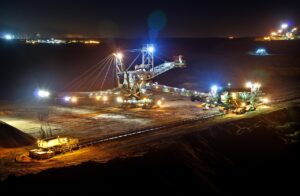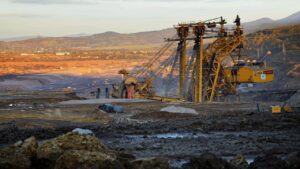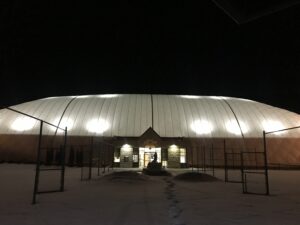As the world increasingly prioritizes sustainability, the development of sports infrastructure must also evolve to embrace eco-friendly practices. Project management plays a critical role in this transformation, ensuring that sports facilities are designed, constructed, and maintained with sustainability in mind. This article explores how project management contributes to sustainable sports infrastructure development, highlighting planning, execution, and long-term maintenance strategies.
1. Planning and Executing Environmentally Friendly Sports Facilities
The journey to sustainable sports infrastructure begins with meticulous planning and execution. Project managers are essential in integrating sustainability from the outset.
A. Sustainable Design Principles:
- Site Selection: Choosing locations that minimize environmental impact, such as redeveloping brownfield sites or using areas with existing infrastructure.
- Energy Efficiency: Incorporating energy-efficient systems and renewable energy sources, like solar panels and wind turbines, to reduce the facility’s carbon footprint.
- Water Conservation: Designing water-efficient plumbing systems and utilizing rainwater harvesting for irrigation and facility needs.
B. Green Building Certifications:
- LEED Certification: Aiming for Leadership in Energy and Environmental Design (LEED) certification ensures that the facility meets stringent sustainability criteria.
- BREEAM and Other Standards: Considering other certifications like BREEAM (Building Research Establishment Environmental Assessment Method) to further validate the facility’s green credentials.
C. Material Selection:
- Eco-Friendly Materials: Using sustainable, recycled, or locally sourced materials to reduce the environmental impact of construction.
- Waste Management: Implementing waste reduction strategies during construction, such as recycling construction debris and minimizing waste.
2. The Role of Project Management in Long-Term Sustainability and Maintenance
Sustainability extends beyond the initial construction phase. Project management ensures that sports facilities remain eco-friendly throughout their operational lifespan.
A. Operational Efficiency:
- Energy Management: Continuously monitoring and optimizing energy use to maintain efficiency and reduce costs.
- Maintenance Schedules: Developing regular maintenance schedules to keep all systems operating efficiently and to prevent energy loss or resource waste.
B. Sustainable Practices:
- Green Operations: Implementing green practices in daily operations, such as using non-toxic cleaning products and encouraging recycling and composting.
- Transportation: Promoting sustainable transportation options for staff and visitors, including bike racks, electric vehicle charging stations, and public transport incentives.
C. Community Engagement:
- Education and Outreach: Engaging with the community to promote sustainability initiatives and educate on the importance of eco-friendly practices.
- Volunteer Programs: Encouraging community participation in sustainability efforts, such as tree planting or local clean-up events.
3. Examples of Sustainable Sports Infrastructure Projects
Examining successful sustainable sports infrastructure projects provides valuable insights into effective project management practices.
Case Study: Mercedes-Benz Stadium
- Overview: The Mercedes-Benz Stadium in Atlanta, Georgia, is renowned for its commitment to sustainability.
- Sustainability Features: The stadium achieved LEED Platinum certification by incorporating renewable energy sources, water conservation systems, and a comprehensive waste management program.
- Project Management Success: Effective project management ensured that sustainability goals were met at every stage, from design to operation, resulting in one of the world’s greenest sports facilities.
Case Study: London 2012 Olympic Park
- Overview: The London 2012 Olympic Park was designed with a strong emphasis on sustainability.
- Sustainability Features: The park utilized recycled materials, renewable energy sources, and innovative water management systems.
- Project Management Success: Project managers coordinated efforts across various stakeholders to ensure the successful integration of sustainable practices, leaving a lasting legacy of environmental stewardship.
4. Challenges and Solutions in Sustainable Sports Infrastructure Development
Developing sustainable sports infrastructure presents unique challenges, but effective project management offers solutions to overcome these obstacles.
A. Budget Constraints:
- Solution: Project managers can identify cost-effective sustainable alternatives and secure funding through grants, sponsorships, and partnerships focused on environmental initiatives.
B. Stakeholder Buy-In:
- Solution: Engaging stakeholders early in the planning process and demonstrating the long-term benefits of sustainability can foster support and collaboration.
C. Technological Integration:
- Solution: Staying updated with the latest sustainable technologies and practices ensures that sports facilities remain at the forefront of environmental innovation.
Conclusion
Project management is crucial in developing and maintaining sustainable sports infrastructure. By integrating sustainable design principles, managing operations efficiently, and engaging the community, project managers can ensure that sports facilities not only meet current environmental standards but also set new benchmarks for sustainability. The success stories of Mercedes-Benz Stadium and London 2012 Olympic Park illustrate the transformative impact of effective project management. As the demand for sustainable sports infrastructure continues to grow, the role of project management in driving these initiatives will be increasingly vital.
AI-Assisted Content Disclaimer
This article was created with AI assistance and reviewed by a human for accuracy and clarity.











